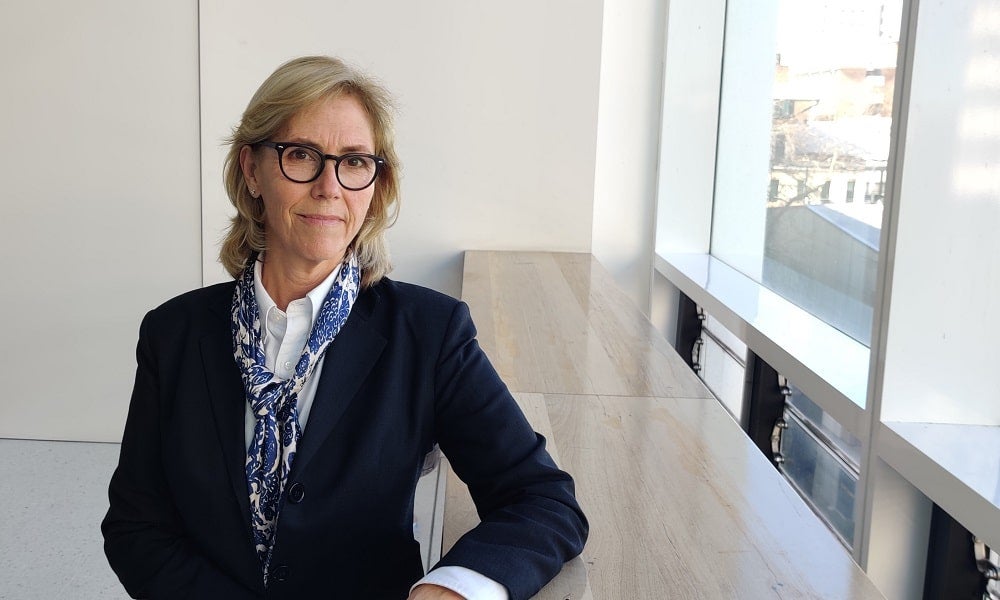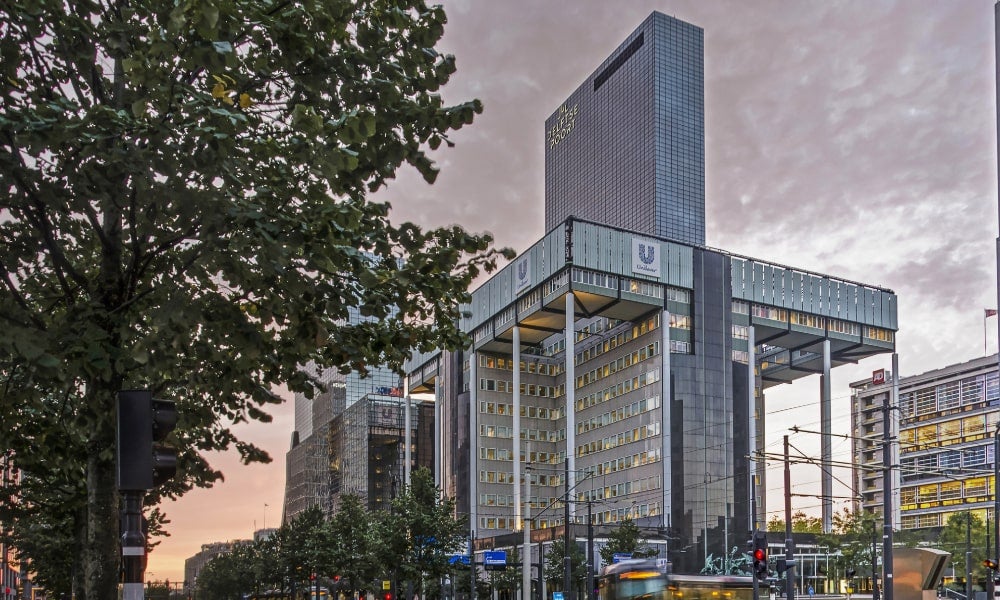Is there an evergreen organisational structure? Lessons from Unilever
Is there an ideal structure for large multinational organisations? UNSW Business School’s Jacqueline Mees-Buss examines how Unilever has adapted to changing times
Organisational structure is one of the most effective but also one of the most challenging tools that senior managers have at their disposal to manage and control their organisation. The larger and more complex the organisation is, the harder it is to run – and thus to find the best and most effective structure. So for many years, researchers have been trying to find the best structural solution for all times – an "evergreen" one.
In the 1970s, when the phenomenon of multinational organisations rapidly increased, Stopford and Wells (1972) looked at how complex multinational, multidivisional firms were structured and concluded that, as firms continued their quest for product diversification and global expansion, they would inevitably move towards a global matrix structure. In the classic matrix structure they described, local subsidiaries were the key decision-makers with reporting lines both to their regional and to their product-division heads who played a coordinating and advisory role.
In the 1980s, Bartlett and Ghoshal compared the structures of multinational companies in different parts of the world: North America, Europe and Japan. Given the differences in culture and geographic location, they identified three types of matrix structures: multinational, international and global. But, they concluded, as these firms continued to expand and grow internationally, they eventually all moved to an ‘ideal type’ that they called the ‘transnational’ organisation. The transnational offers a structure that optimises the tension between local responsiveness and global integration. Some of the decisions that used to be made by local subsidiaries in the traditional matrix, moved to regional and global centres or cross-functional and multi-national working groups. Because they did not believe this tension would ever go away, Bartlett and Ghoshal presented the ‘transnational’ as an ideal structure for all times.
In the years that followed, multinationals continued to implement restructurings, but it became harder to study them given their size, global dispersion, and growing reluctance to give access to researchers. In the meantime, the transnational model continued to be taught in business schools as the ideal (or evergreen) structural solution.

Unilever’s transformation from ‘transnational’ to ‘neo-global’
When I started to look at how Unilever had interpreted and implemented corporate social responsibility in the first decade of this century, I still expected the company to be structured according to the principles of the transnational model. The Unilever I had worked for in the 1980s and 1990s was indeed transnational, but I soon discovered that the organisation I came to study in 2011 certainly was not.
I took a sidestep from my initial research question regarding CSR and started to investigate how the structure of the organisation had changed and why. What I found was that structure and strategy both follow an underlying principle of what is believed to be necessary to survive. In Stopford and Wells’ days, Unilever’s executives and their peers believed that what was necessary to survive was ‘to minimise risk and maximise knowledge by diversifying the firm and having a presence in multiple locations’. This resulted in complex organisations of multiple, very entrepreneurial, subsidiaries in multiple countries around the world. The traditional matrix was the ideal structural solution. But this principle changed in the 1980s when new technology started to enable multinational companies to gain greater economies of scale through regional or global integration of some of their activities while continuing to benefit from their local presence in all other activities. The new principle became ‘balancing local responsiveness and global integration'. The transnational was the ideal structural response to this principle.
Yet, at the end of the 20th century, with the rise of global value chains, the ubiquity of the internet and a shift from managerial to financial capitalism, this principle no longer guaranteed survival. Unilever was excellent at what they called ‘glocalisation’, but by 2011, this had become a stumbling block instead of a competitive advantage. The complex structure of the ‘transnational’ was expensive and decision-making was relatively slow. To survive in a seemingly borderless environment, where distance no longer seemed to matter, and technology allowed for real-time collaboration around the world, the principle for survival became ‘maximising global efficiency’; something the transnational structure could not deliver.
Read more: Unilever’s CEO Nicole Sparshott: why sustainability makes good business sense
In 2002, Unilever’s two CEOs at the time, Antony Burgmans and Niall FitzGerald, decided that in order to maximise global efficiency, the company had to get rid of all – now considered unnecessary – duplication in all of its subsidiaries around the world. Not every country needed its own factory, its own marketing managers, its own R&D team, its own management training program, or recruitment procedures. Initially, this created a lot of unrest in the organisation. Powerful local subsidiaries, led by very experienced general managers, had been key to Unilever’s success for the better part of a century. Step by step they were stripped of their responsibilities.
When I studied the organisation from 2011-2013, the dust had settled, and the organisation was operating again like clockwork. I called it a neo-global organisation, to emphasise its contemporary global structure. It had taken the organisation about 10 years to find the optimal structure to deliver on the new principle for survival: maximising global efficiency. In this new structure, most of the decision-making took place in global centres of expertise, not local subsidiaries. Each activity in the value chain had its own global centre or centres of expertise. These global centres were strategically located around the world. The way they operated together was like a relay race, each global team passing the baton on to the next with great efficiency and speed. All processes, from hiring new people to planning production and processing orders, were optimised to match or beat global best practice, and standardised around the world, supported by a global ‘enterprise solutions’ centre in Bangalore, India.
Was it the ideal structure for all times? No. But it was the ideal structural response to the principle of maximising global efficiency.

Transforming large and complex organisations: a process of trial and error
So, is it possible for large and complex organisations to totally transform their structure? Well, looking at Unilever, yes, they can. How did they do it?
The first thing to note is that there was no masterplan, no blueprint to follow. The most important step for the transformation was for top management to admit that the old principles for survival on which the whole organisation was built, were not working anymore. Even worse, they had become a liability. For a company like Unilever, to admit that its’ structure of highly successful and locally embedded subsidiaries was not working anymore, was a brave admission.
In asking one of Unilever’s two top managers at the time (Antony Burgmans) how they decided what the new structure should look like, his honest response was that it was a process of trial and error. There was no recipe, but in order to dismantle the local subsidiaries, the decision-making power they used to have had to be taken away from them, so as a first step, regional centres were created and made responsible for local operations in their region. In the years that followed, the organisation went through three more cycles of significant structural change, until a highly efficient global structure emerged that ‘worked’. The company was thriving again, people felt comfortable in the new structure and all those who didn’t have left. The new organisation demanded more team players, less entrepreneurs, more specialists, less generalists. The new ‘high performance’ culture was not for everyone. As one of the managers who decided to leave said: “I’ll still invest my money in Unilever, but I don’t want to work for them anymore.”
Read more: The 'S' in ESG and what it truly means for corporate sustainability
Breaking with the past: a first step toward transformational change
So what you see is that transformational change is initiated when top managers realise that the principles for survival have changed. In our paper in the Journal of Business Studies, we’ve called this a "break point". The first step is then to introduce a new structure that disrupts the old one. This leads the company into what we’ve called a disruptive cycle of restructuring. The organisation is struggling to come to terms with the new balance of power and with the fact that some of the old rules no longer apply. This first round of restructuring is seldom suitable for the longer term. Further restructuring will be necessary, until the best structure is found to respond to the new conditions for survival. What we have seen in the history of Unilever, is that it usually takes at least three cycles of restructuring until a new “ideal structure” is found.
Right now, we live in interesting times, because we seem to be at another break point. In January of this year Unilever CEO Alan Jope announced a major restructuring. One that will see the company move to five much more independent business groups, each with its own operational units in multi-country clusters around the world. This new structure is the first significant break with the principle of maximising global efficiency in 20 years.
The reason for this is that the conditions and thus principles for survival, changed. Growing political and ideological tensions call for a re-evaluation of the highly centralised and specialised structure of the neo-global. Even hedge funds and activist investors have started to demand structural change. They saw that the highly centralised organisation was starting to have a negative impact on shareholder return. Investor Nelson Peltz (since this month a non-executive director of the Unilever board) called for a return to more independent divisional units and separation and spinoff of Unilever’s less profitable businesses.

While the new structure is in the process of being implemented, the new principles for survival are still being worked out. What is clear, is that avoiding all duplication to maximise global efficiency is no longer seen as the solution. According to CEO Alan Jope, the new structure must give the organisation “greater agility”, that is to say, greater responsiveness to consumer and channel trends around the world. Finding the right structure to achieve ‘greater agility’ in a globalised yet more divided world, will most likely be another multi-cyclical process of trial and error whereby it is not certain if the CEO himself will survive the first, disruptive cycle. Many in the past have not.
Key CSR and ESG considerations in the process of change
It is obvious that corporations who depend on large investors for their survival, do not escape the necessity to first and foremost remain among the top providers of shareholder return. Toward the end of last year, Terry Smith, founder of Fundsmith, accused Unilever’s top management of having taken their eyes off the ball by paying too much attention to its sustainability credentials and not enough to what was necessary to guarantee good business performance.
If one looks at the history of Unilever, shareholders’ demands have steadily increased and have placed more, not fewer constraints on senior managers. Even the new trend towards ESG impact investment has not changed that. It is quite sad that a company like Unilever sells some of its core businesses such as margarines and tea because they are no longer considered profitable enough. Instead, Unilever is forced to focus on high-margin categories such as ‘functional nutrition’ and ‘prestige beauty’, categories Unilever’s forefathers would have rejected based on their triviality and frivolity. They saw it as their social responsibility to provide good quality basic household products at a reasonable price for everyone.
Subscribe to BusinessThink for the latest research, analysis and insights from UNSW Business School
Transformational change advice for senior leaders
In looking at what Unilever has learned in the process of organisational transformation, there are some key takeaways for senior leaders:
• The decision-making structure is and remains the key tool top management has not only to manage and control, but also to transform a company.
• There is not one ideal structure for all times, but there are ideal structures to respond to a particular principle for survival. To find that structure is a process of trial and error.
• Successful organisational transformation starts with the de-legitimisation of what used to be legitimised and the dethroning of some of the powerful decision-makers in the organisation who may have contributed greatly to the company’s success in the past. Not all of them will be a good fit for the new organisation.
• As a result of the above, few CEOs survive the first disruptive cycle of transformation. Good internal communication of how the principles for survival have changed, may help to get most managers on board to support the change. But to those for whom the changes mean that they lose their decision-making power, change is never going to be easy.
In conclusion, initiating transformational change is disruptive, takes multiple cycles of change, and often comes at a high cost for its senior leaders. Brave leaders do it anyway when they realise that not disrupting the organisation comes at a greater cost, which is the future of the organisation itself.
Dr Jacqueline Mees-Buss is a lecturer in the School of Management and Governance in UNSW Business School. Prior to joining academia, she worked as a senior executive for large multinational corporations such as Unilever in the Netherlands, South Korea, the Philippines, Germany and Australia, and as an independent consultant for companies such as CBA, Westpac, Lendlease, and Colgate Palmolive. For more information read What happened to the transnational? The emergence of the neo-global corporation in the Journal of International Business Studies, or please contact Dr Mees-Buss directly.
